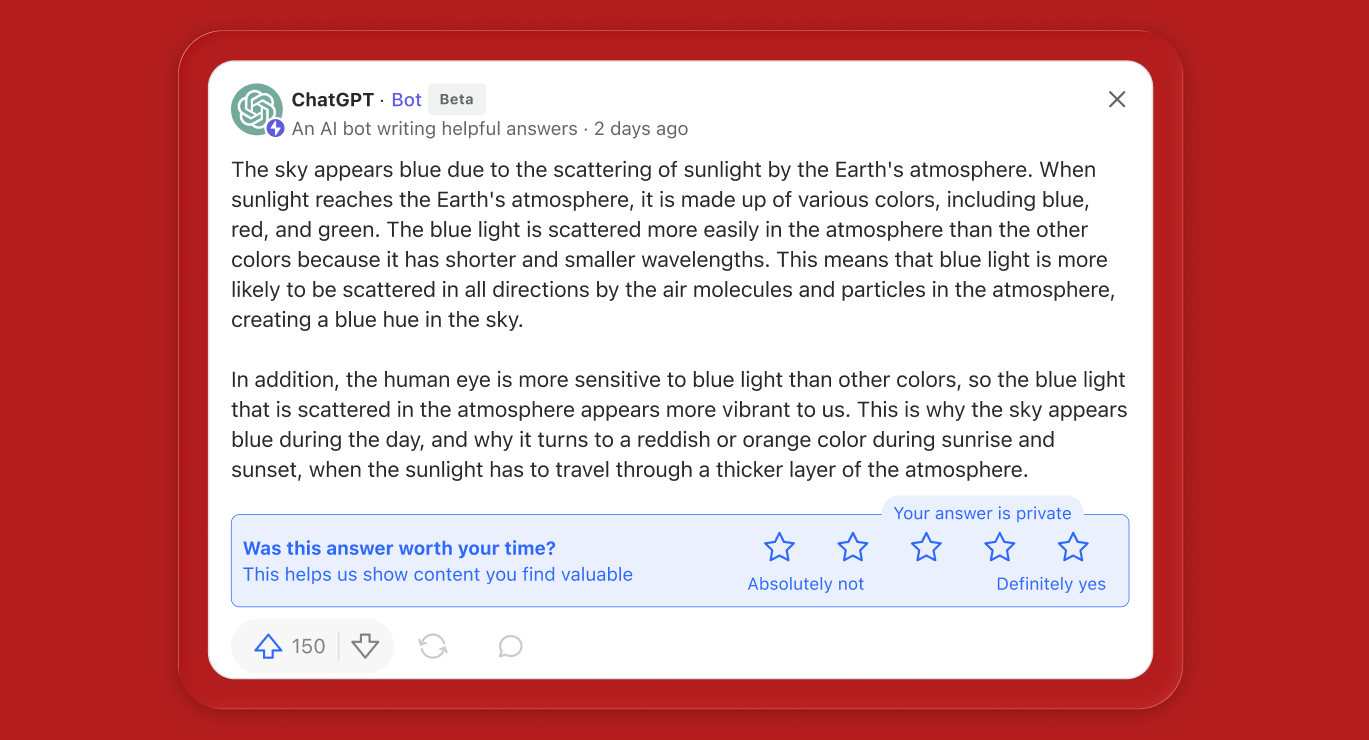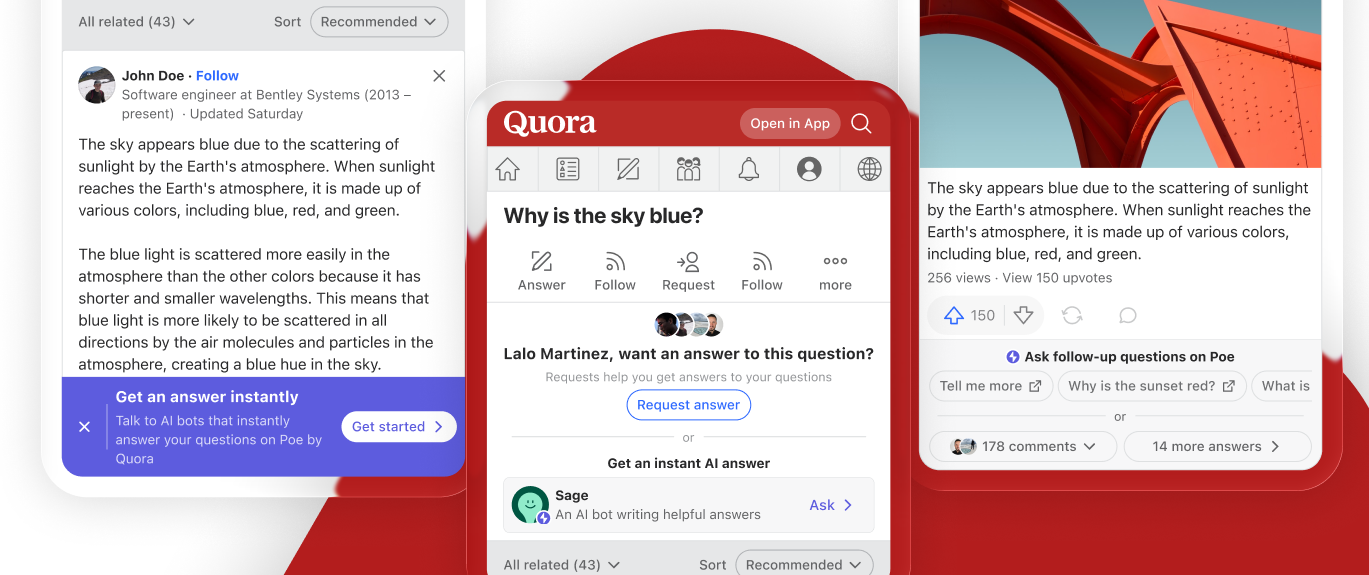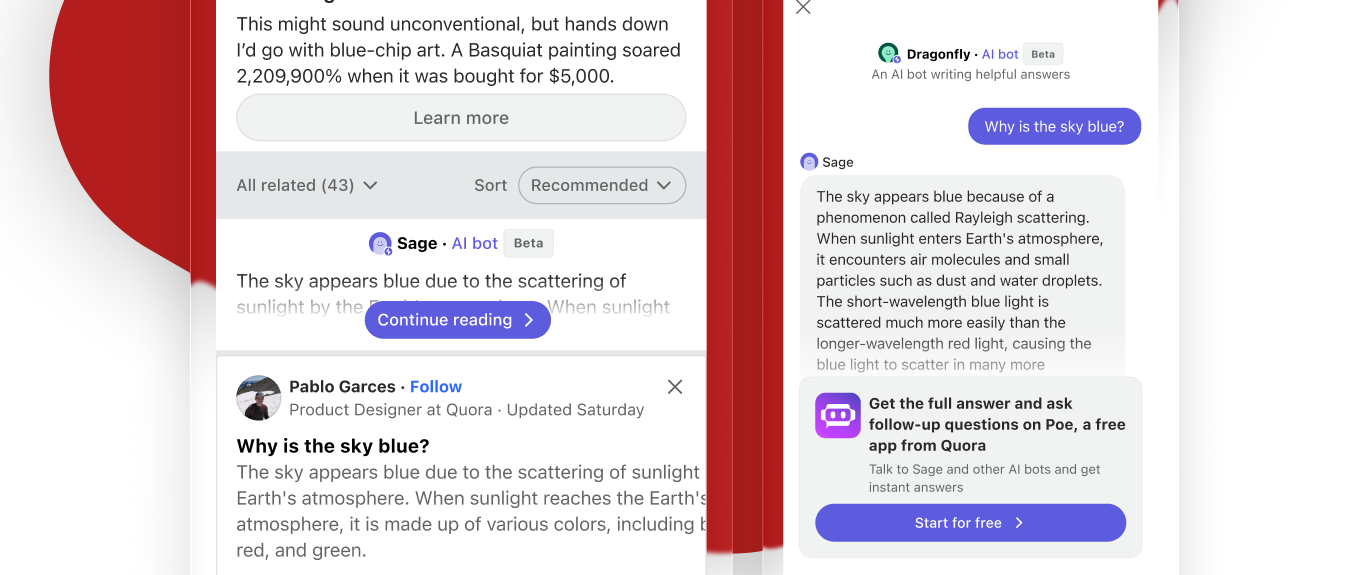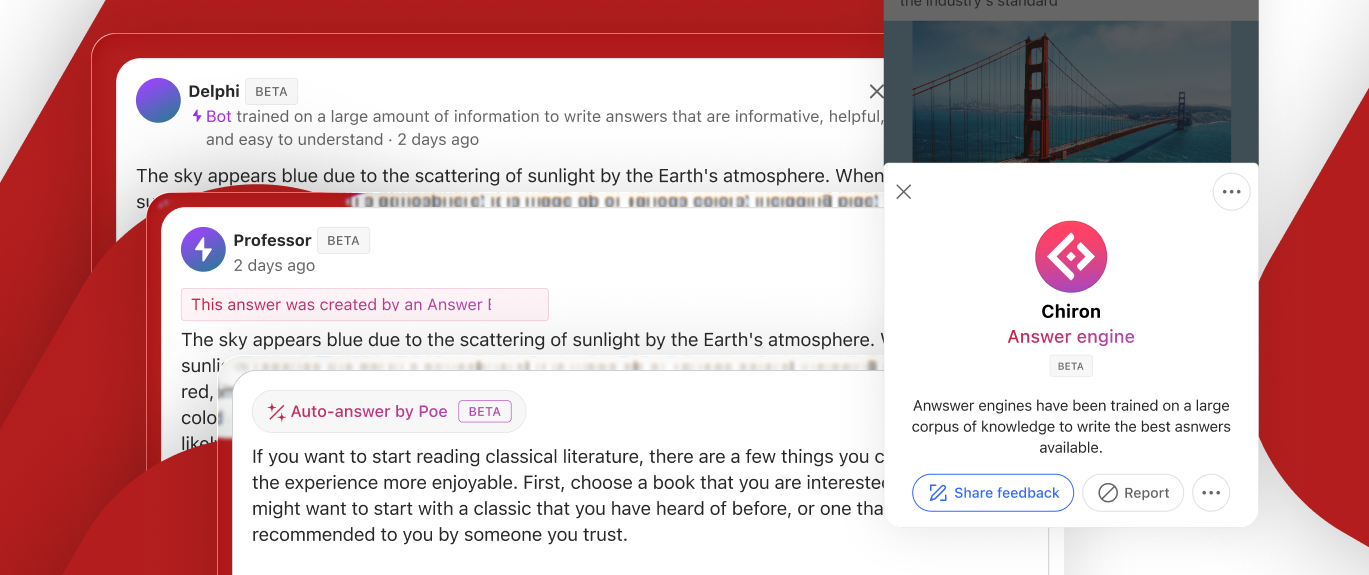Driving engagement and growth on the AI era
A journey that took us from adding LLM generated questions to incentivize Quora creators to adding millions of users to Poe.TL;DR: What we achieved
Through multiple rounds of iteration, A/B tests and UX research, we added LLM generated answers to the question page, Quora's most popular page, which led to 250k+ monthly signups on Poe at the beginning of Poe's journey. All without a negative impact on engagment or revenue (a complicated feat).
Though this all sounds natural now, at the time a lot of these features and interaction were new and there was a fair amount of negative perception around LLMs and AI generated content, which made this extra tricky.

Where we started
As LLMs became more capable, we experimented with using them to drive engagement on Quora. We created LLM-generated questions to incentivize creators to write more answers—designed to be high quality and aligned with what people wanted to see.
The experiment worked and showed early LLM potential. A few months later, this led to Quora developing the first version of Poe.
Driving growth to Poe
As Poe was getting ready to launch, we knew that we needed to drive growth to it and Quora's traffic could be a great source of new users. So we started exploring.
After much iteration, we finally landed in a successful variant: we added a new card at the top of a few question pages that had let users open up a small chat with Poe with a CTA to download the app to continue the conversation.


More experiments followed, until we landed in another successful approach, instead of having the card at the top and styling it in a way that called out a lot of attention, we added a normal answer bundle that just attributted the answer to a Poe bot, with another CTA to download the app to continue the conversation. This variant launched driving more than 66k weekly signups to Poe.
